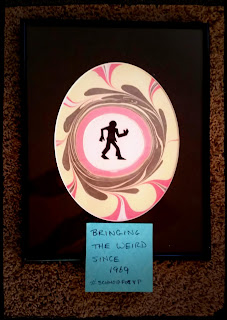Last week, I spent some time discussing whether or not the techno-corps (Google, Facebook, Apple, Amazon, et al) were trustworthy. The short answer is that I trust them to do what they say they are going to do in their Terms and Conditions. I do not trust them to protect my personal information because 1) they can be forced to reveal that information by my government and 2) there is no such thing as a perfect defense against hacking.
But that's not the end of my thoughts on this topic because I am a parent. My Middle School Daughter (the MSD that has been missing from several months of these posts) is swimming in these technical waters as well. Teaching her how to navigate them is my responsibility, one that is almost more difficult to explain than why we have to say "Please" when we ask for things (instead of "Boop" or "NOW!").
Always Google
Keep in mind that she has never known a world without Google. Knowledge is no more than an "Okay, Google" away. Encyclopedias and research libraries are foreign to her. She has had a
presence on Facebook almost since before she was born thanks to her mother, her grandparents, her aunts and uncles and me. She's had no control or consent to these social media postings, but she also does not complain about them. At least, not yet.
The point is that on-line is part of where she lives. It's not the only place she lives but it is a part. She hangs out with her friends on Hangouts. She posts her artwork on Instagram. She comments (endlessly) on YouTube. She has three email accounts. (But not Google+: "Nobody uses that, Dad!" eye-roll)
Technical Parenting
Most other parents that I know tend to restrict their children's use of technology: smartphones, tablets, the Internet. The feeling is that kids need to spend time in reality, facing the physical world and its challenges. And there is certainly some truth to this: the only way we all learn to roll with the punches is to by having survived a few punches.
However, the punches are no longer only physical punches. Where is she going to learn how to deal with phishing scams? Cyberbullies? Nigerian Emails? Not by avoiding them but by encountering them and asking questions. Usually of me. That is behavior that I want to encourage.
If I restrict her use of technology because of what might happen, then I teach her that technology is to be feared, or, worse yet, that it is forbidden fruit that must be used in secret. Then she will not ask me questions about it because she will be afraid of being caught.
Instead, I am her technical support. It's a role that I sometimes enjoy, sometimes dread, but at least it creates a habit of coming to Dad to get help. I ultimately want her to be able to answer her own questions around technology, but for the moment this is a better solution.
Cyber Boundaries
Understand that I do not agree with all of the choices that she makes in her use of technology. She feels entitled to comment on everything on YouTube, something that I do not do because I do not want to start a flame war. But all of her comments get forwarded to my email thanks to Gmail auto-forwarding. On top of that, the content that she consumes is not interesting to me, but she wants to share it with my and so I make the effort.
And there are boundaries. Her Instagram account is private and I know who she has allowed to view it. I follow her and know what she posts. If she kicks me out, then the account goes away. I know the channels to which she has subscribed on YouTube; I don't watch every video, but I know the general tone of each channel. Some of them use swear words, but instead of restricting them, we have talked about it. If she starts using those words in casual conversation, then she knows that the phone will go away for a while.
Features not People
The bottom line is that my daughter needs to learn to live in both the real world and this on-line world. It has always been a part of her life and it always will be. Both have rules of behavior and conduct, but she is not going to learn them by avoiding either of these worlds. I certainly do not want Google, YouTube, Instagram, Facebook or Amazon raising my child. Fortunately, by being her technical support, I can help her understand that these companies are features of the on-line landscape, not people who can be trusted.
Will this apporach always work? No, but it seems to be working for now. When it stops, I'll have to change how I parent the internet. But change is nothing new; it's what technology is all about.











































